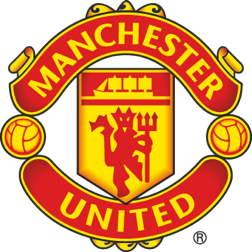How Sir Matt Busby led us to greatness
It's 30 years since Sir Matt Busby, the man who transformed Manchester United into one of the greatest clubs in the world, passed away. But just how did he do it?
While there was a Manchester United before Sir Matt Busby, it bore no comparison to the Manchester United that now occupies Sir Matt Busby Way. The Reds were “a team with no ground and no money”, as the Scot succinctly put it. Throw in the absence of any tangible success for over three decades prior to Busby’s arrival, and a glance to the present day underlines just how much of his groundwork has gone into the goliath institution known around the modern world.An ex-Manchester City and Liverpool player with no managerial experience, taking his first role at an ailing club; success was by no means nailed-on, but seldom have two parties been a better match for one another. Matt’s appointment was a plot twist none saw coming, a move of such inspiration that it changed the landscape of English football. Busby hauled United – and the rest of the country, over time – into the spotlight of the continental game, showed it to the world and watched on as it captured the collective imagination.
Even at 35, with no direct experience, Matt had a clear vision of his style of management, having noted core issues in football management – most notably the disparity between players and managers. As he evolved from one towards the other, he vowed to implement his learnings in order to get the most from his squad. When club owner James W Gibson met with Busby in February 1945 to discuss doing so at United, the Scot outlined his vision in such compelling fashion that the planned offer of a three-year contract was quickly upgraded to a five-year deal.
The terms of Busby’s charge were simple: total control. “I would be the boss,” he explained. “This being so, I would not have any excuse if I failed. Nor would I offer any. They could kick me out.”
Matt had honed his leadership skills as Company Sergeant-Major Instructor Busby during the Second World War, and after being demobbed he began his new role in October 1945. It was not until four FA Cup games the following January that United contested a competitive game under their new manager, but Busby’s first full season, 1946/47, yielded a second-placed finish – the club’s best since the 1910/11 title triumph.
The enlistment of assistant manager Jimmy Murphy was a key part of the Reds’ upturn in fortunes, and the duo’s second term together culminated in a thrilling victory over Blackpool in the 1948 FA Cup final. United’s 4-2 win remains an all-time classic, but even in the immediate aftermath of the success, Busby and Murphy were pondering the best way to move their successful but ageing side to the next level.
The answer lay in the club’s Manchester United Junior Athletic Club (MUJAC) system, into which the manager would repeatedly delve over the coming years. “Matt’s ideal was to create at Old Trafford the sort of spirit one gets in a school team in which players grow up together, and know one another both on and off the field,” Murphy later revealed. “It was not enough to have a group of fine young footballers; they had to have a sense of belonging.”
That was fostered over the coming seasons as a succession of top young talents were assimilated into first-team duty. Two homegrown players had featured in the 1948 FA Cup final win over Blackpool; by the time the Reds clinched the 1955/56 First Division title against the Seasiders, the team contained eight players reared in-house.
Busby insisted that his Babes be given the chance to compete in the recently formed European Cup, defying the Football Association’s wishes to do so. The rest, of course, is history. The Reds’ second tilt at the competition ended in tragedy in Munich, prompting Busby to regularly berate himself for surviving where others had perished. Though he initially wanted to turn his back on football, Busby was talked around by his wife, Jean, who said: “I am sure those who have gone would have wanted you to carry on.”
Though it was an excruciating process to rebuild first himself, then United, Matt Busby did so in a remarkably short space of time. Five years on, his heartbroken club had won the FA Cup. Another half-decade on, two league titles already secured, he had led them to the European Cup so coveted by his Babes.
A knighthood swiftly followed and, after his retirement, a place on the board of directors before the role of club president beckoned.
Though United’s fortunes faltered after winning the European Cup, the arrival of Alex Ferguson in 1986 marked a watershed in the club’s history. “Sir Matt was extremely supportive when I arrived at Old Trafford,” Ferguson later revealed. “The welcome he gave me was marvellous and he helped me to settle down at the club. I never forgot it and I never will.”
By the time of Sir Matt’s death on 20 January 1994, he had seen his beloved United reclaim domestic rule while playing football worthy of the Babes; a fitting send-off for the man to which all the United hallmarks can be traced back. Ferguson built his Old Trafford success on familiar foundations: a reliance on homegrown talent and a commitment to attacking football. The Sir Matt Busby way.




